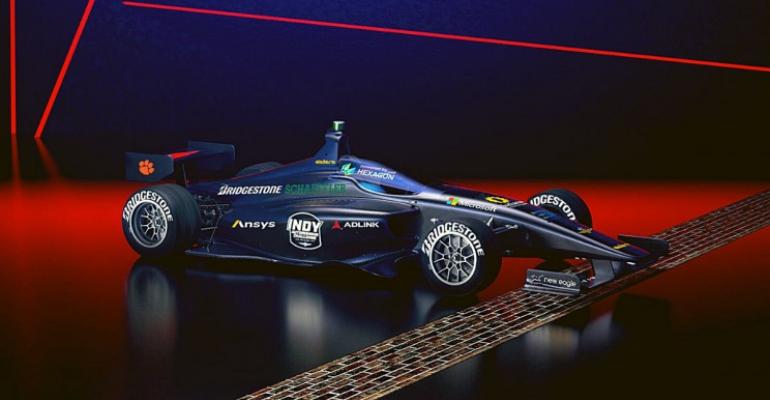They say racing improves the breed, and it’s true. When DARPA decided it wanted to develop autonomous vehicle technology quickly, it knew what to do: hold a competition and offer a million-dollar prize.
The Defense Advanced Research Projects Agency was pretty sure that competitors would spend a fortune to win that $1 million and the bragging rights that go with it. And that’s exactly what happened.
The DARPA Challenge attracted entrants from around the world, and it probably pulled AV technology forward by 20 years. We can pretty much thank it for lidar and 3D mapping.
Fast forward to today and we’ve got a new autonomous competition on our hands. But this time it has nothing to do with DARPA.
They call it the Indy Autonomous Challenge. And instead of trying to advance the development of AV technology, the IAC is about cultivating a new generation of software coders. Groups of students from 21 universities in nine countries teamed up Oct. 23 to run 10 autonomous race cars on the oval at Indy.
To keep a lid on costs and to put the emphasis on software development, each team was given an identical race car with the same AV stack and sensors. They used the AV-21, an Indy Lights race car made by Dallara. Students from Clemson University designed the AV stack, and Juncos Racing incorporated it all into the cars.
The “only” thing each team had to do was develop the software to race wheel-to-wheel against the other cars. Or at least that was the original plan. That’s not quite how it turned out.
Due to rainy weather in the weeks leading up to the event, a number of the teams were unable to complete their testing. So instead of racing wheel-to-wheel, the organizers decided each team would run individual time trials. Then the three fastest teams would qualify for a final 2-lap timed shootout.
To make the qualifying runs more challenging, the organizers put a couple of large, inflatable obstacles out on the track that the cars had to maneuver around. But the teams didn’t know on which lap or where on the track the obstacles would show up.
Their software had to deal with the unexpected – or not deal with it. Six of the 10 cars either spun out, crashed or couldn’t maneuver around the obstacles.
Three teams qualified for the 2-lap shootout and it turned into a nail-biter. The tension along pit wall was intense. In the end it was all about the thrill of victory and the agony of defeat.
The shootout really came down to two teams, the Technische Universität München versus Polimove, which had students mostly from the Politecnico di Milano and some from the University of Alabama.
The Germans went first. They had to run four warm-up laps to get the tires up to temp, then go all-out for two timed laps. They executed it all perfectly and set a 2-lap average of 135.944 mph (218.9 km/h).
Then it was up to the Italians. On their first timed lap they ripped down the straights at more than 150 mph (242 km/h). They were clearly in the lead and on their way to win it. But then, mysteriously, their car slowed down on the second timed lap and drove into the pits on its own.
The Italians were devastated. They mistakenly thought they had run two timed laps, when in fact they had only run one.
It was a human error, not anything to do with the autonomous hardware or the software. Instead of running four warmup laps and two timed ones, they ran four and one. Had they mistakenly counted their out lap as their first lap? We don’t know, and maybe no one will ever say. But it was a million-dollar mistake.
 The IAC wants to do more events. The rumor running through the paddock was that maybe the next race will be at CES in Las Vegas. We’ll see.
The IAC wants to do more events. The rumor running through the paddock was that maybe the next race will be at CES in Las Vegas. We’ll see.
As in any form of racing, it’s all about getting the right number of sponsors. (Where are the OEMs? None of them participated. You’d think this would be the perfect recruiting opportunity for top software talent.)
One thing’s for sure. The next event must have cars racing wheel-to-wheel against each other. That would really accelerate AV software development.
At the awards ceremony that evening, when each team was brought on stage to recognize their efforts, it struck me that among those young faces were likely to be several future billionaires who will launch their own AV startups – just like we saw happen after the DARPA Challenge.
John McElroy (pictured above, left) is editorial director of Blue Sky Productions and producer of “Autoline Detroit” for WTVS-Channel 56, Detroit.





